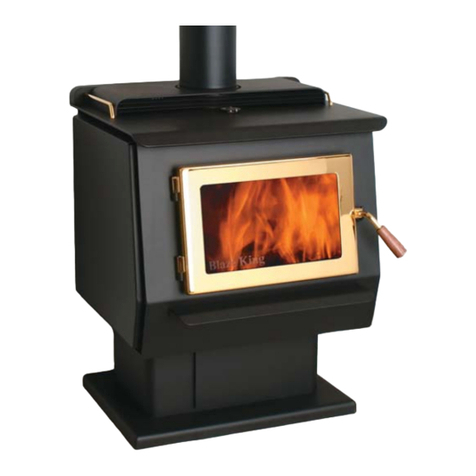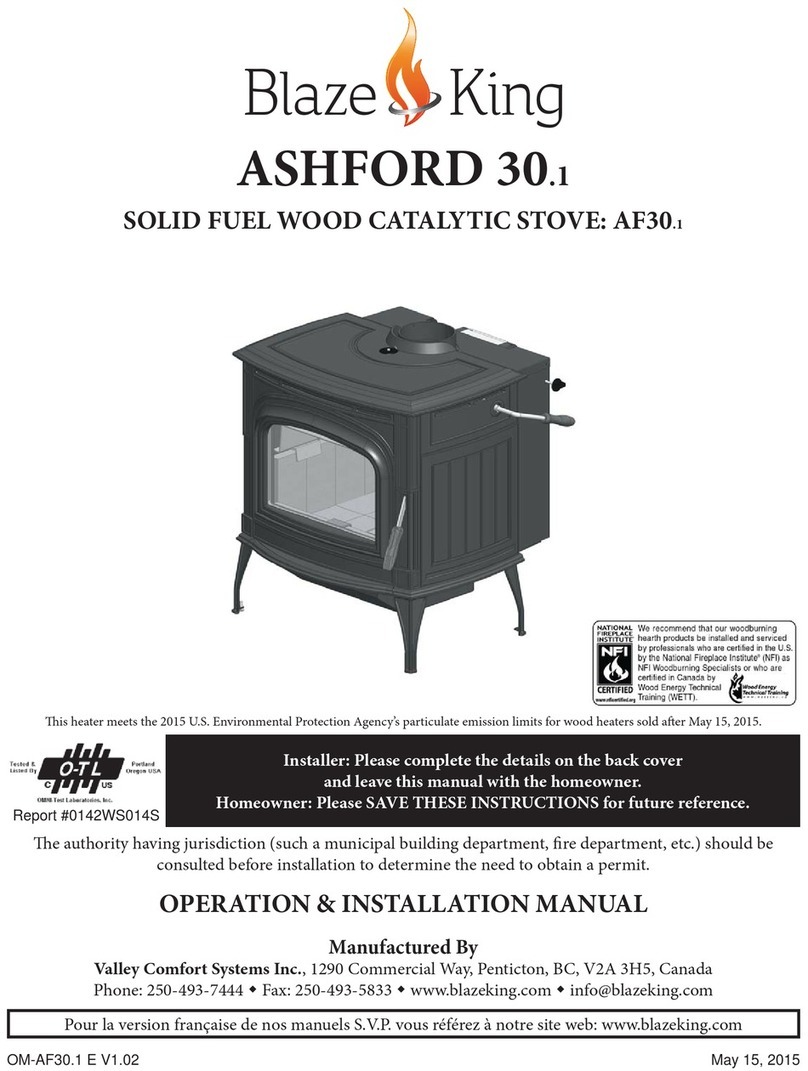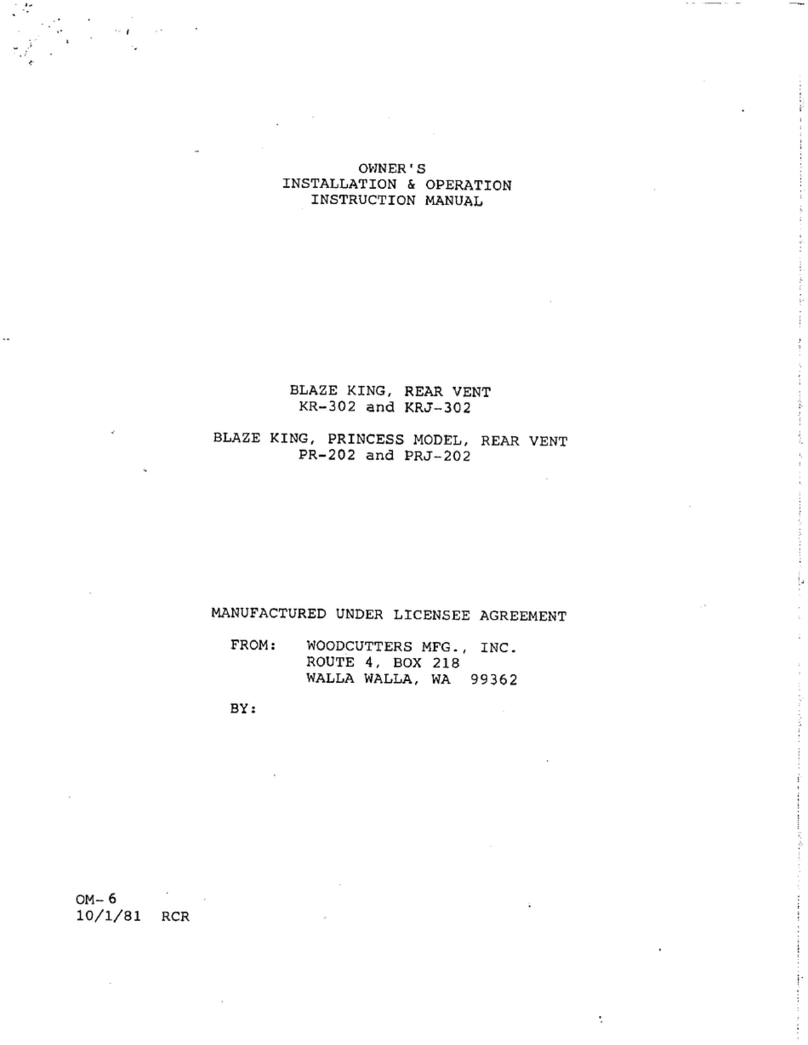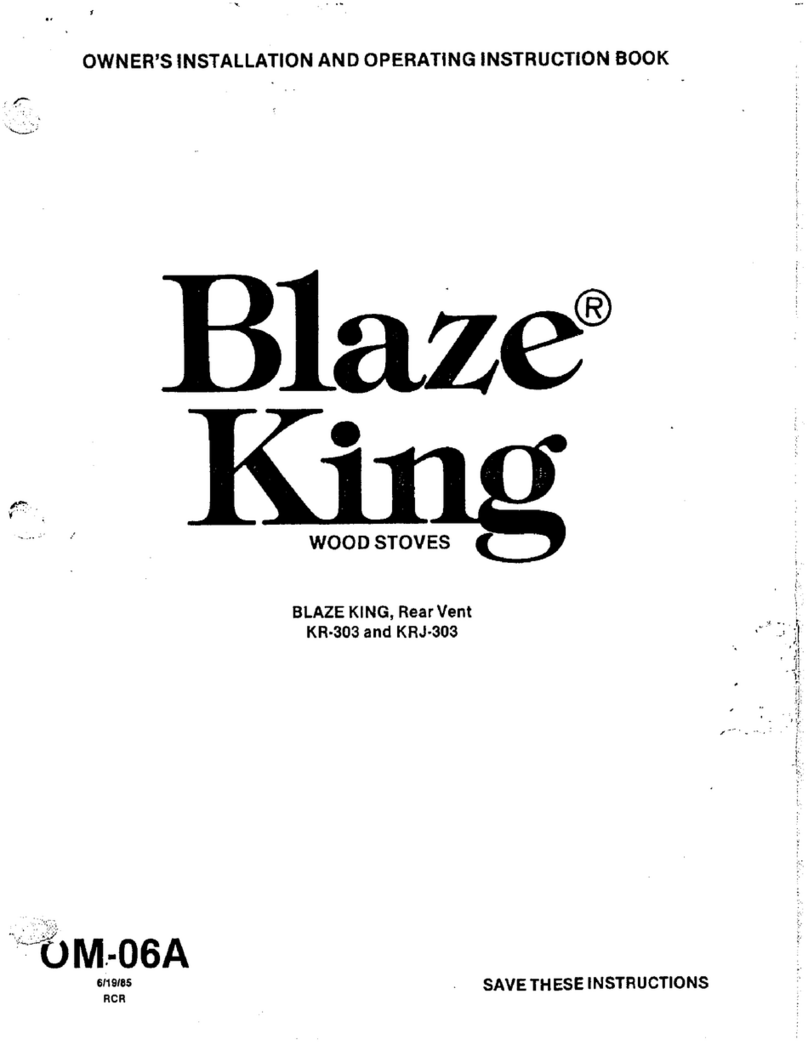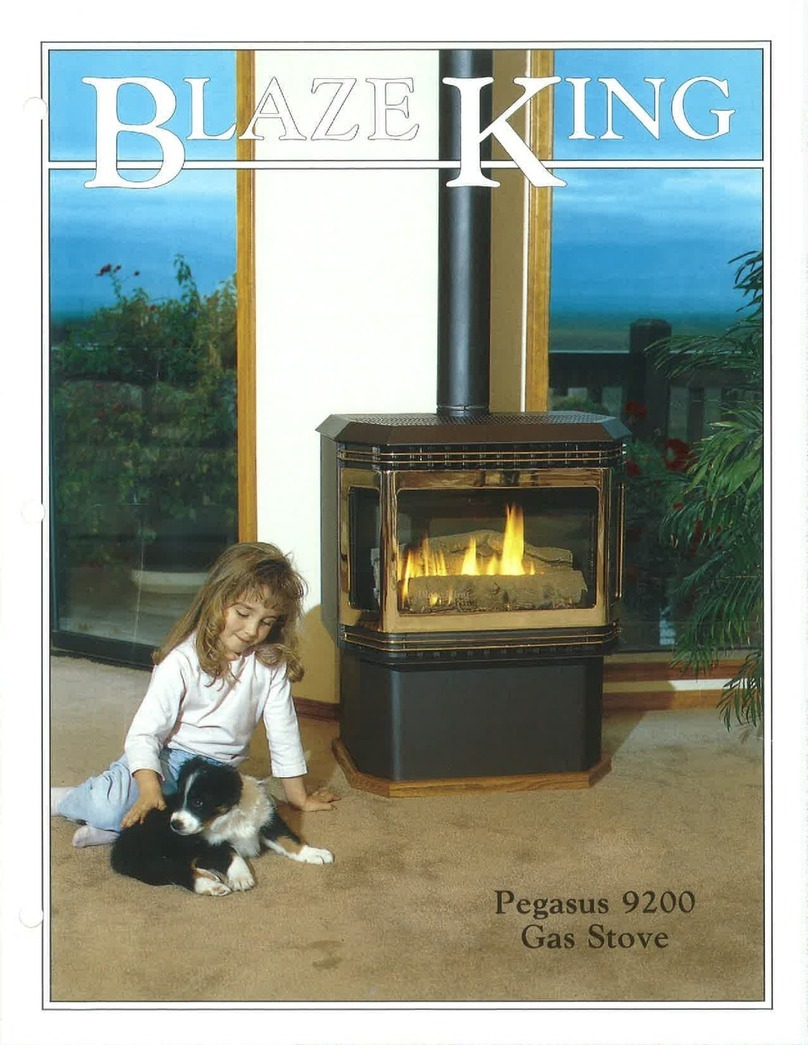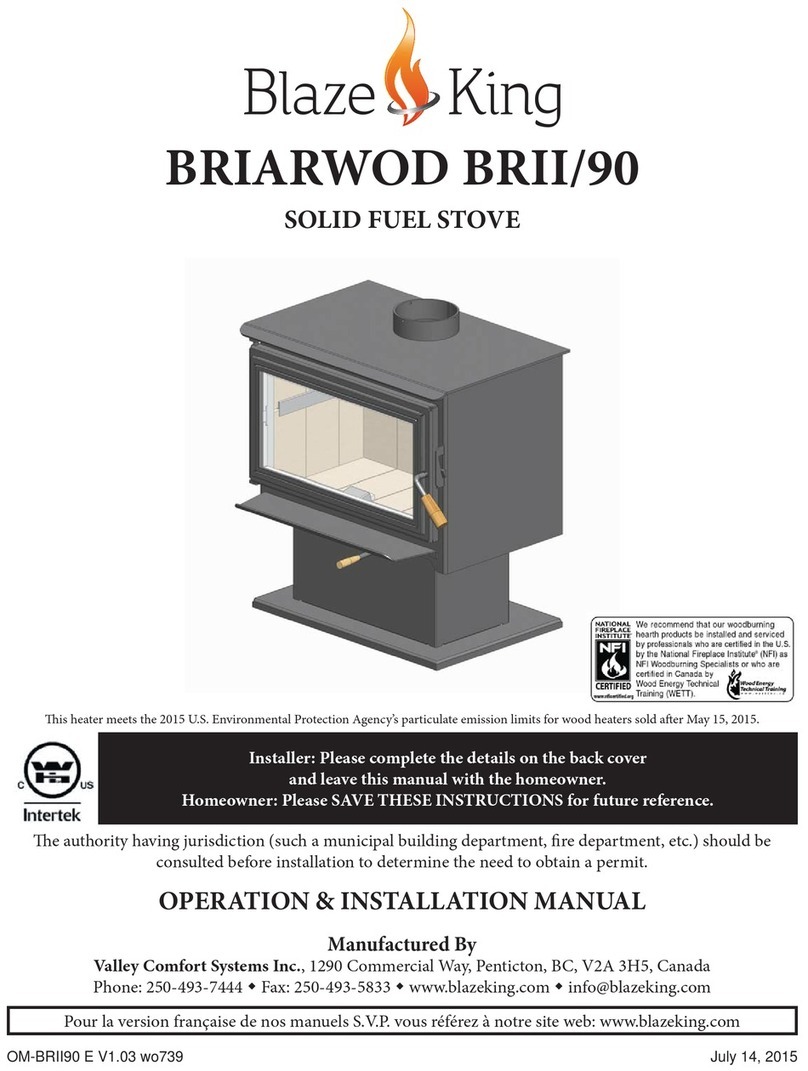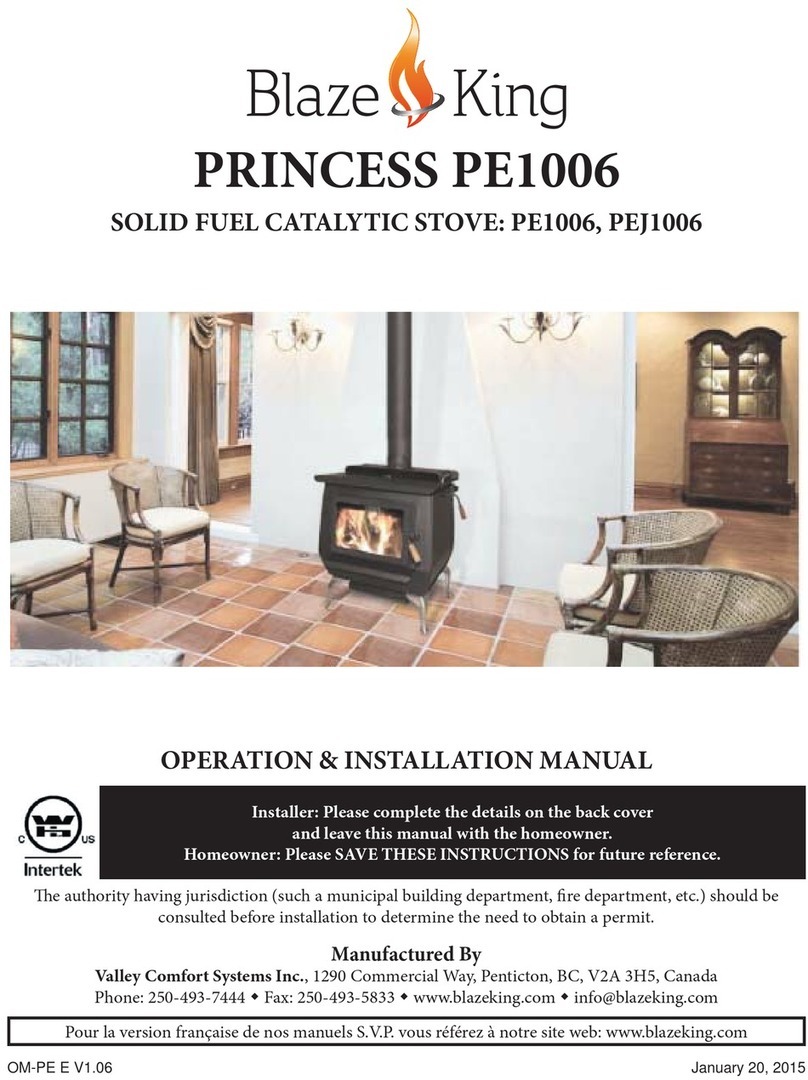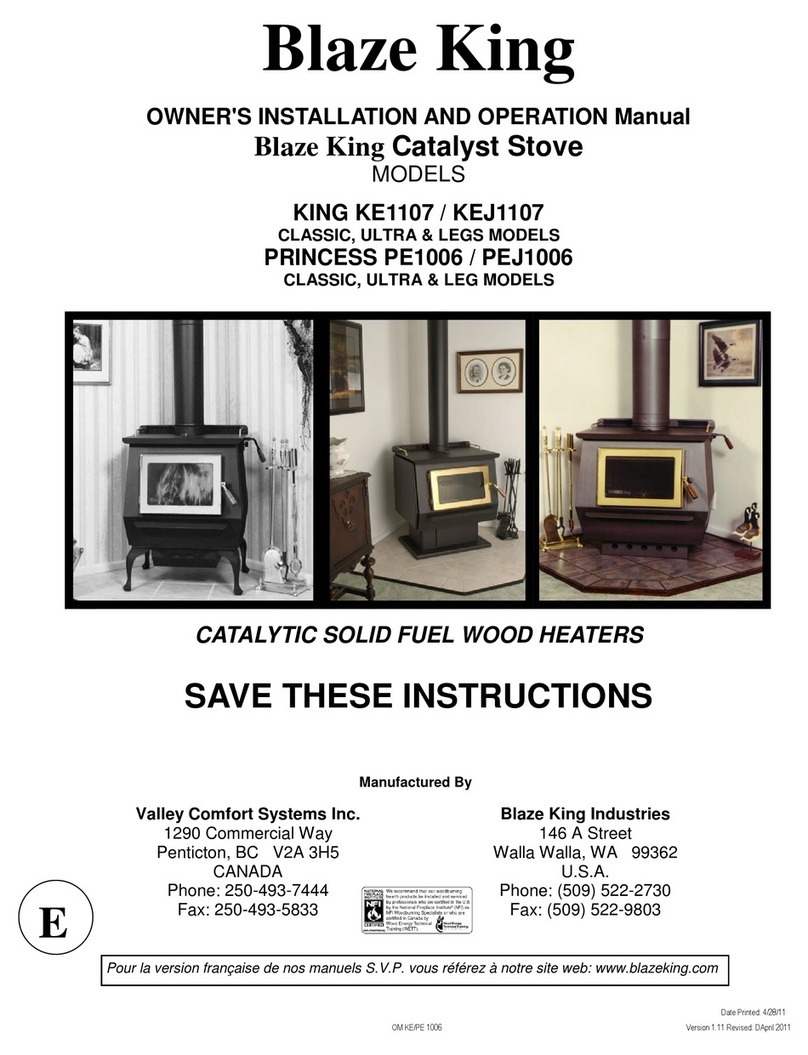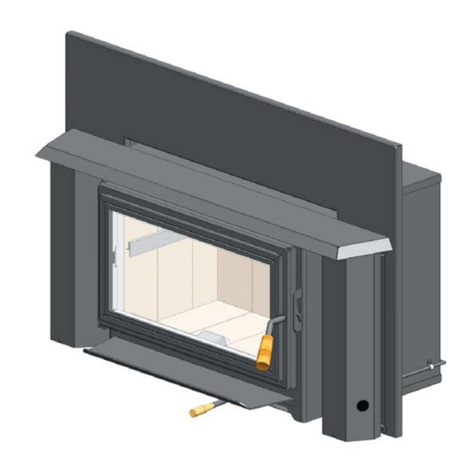
180-PI29 v2.01 April 18, 2023
Page 10 PI29
CHIMNEY CONNECTIONS
COMBUSTION AIR
In air tight homes (most modern construction), careful considerations must be taken into account before
installing a wood burning appliance. It is important to ensure there is adequate intake (combustion) air for all
exhausting type appliances within the dwelling. Heat recovery ventilator (HRV) systems along with constant
running fan motors in air handlers are examples of appliances that must be taken into account when balancing
intake air (others include replaces, range hoods, dryers, etc.). It is recommended that a fresh air intake inlet
into the room where the appliance is located be installed. Failure to do so may result in air starvation, smoke
spillage, and carbon monoxide threats. Consult a HVAC specialist for proper installation practices.
DRAFT PERFORMANCE
Draft is the movement of combustion air into the appliance and out through the chimney as exhaust gas. In
essence, it is the dierence in pressure between the exhaust gas inside the chimney and the outside air that
creates this movement. Warmer, lighter exhaust gasses in the chimney tend to move upward. The amount
of draft created by your chimney can depend on chimney length, horizontal osets, insulating properties,
local geography, external forces, and other factors. External factors (outdoor temperature, wind, barometric
pressure, topography, etc.) or internal factors within the dwelling (negative pressure from exhaust fans,
chimneys, air inltration, etc.) may adversely aect draft.
Too much draft can yield very high temperatures within the appliance and may result in damage. An
uncontrollable burn or excessive room temperatures are indicators of too much draft. Too little draft may
cause back pung (smoke spillage) into the room and plugging of the chimney, chimney cap, or spark arrestor
screen. Inadequate draft can also lead to low heat output and the inability for the combustor to remain active
at low burn rate settings. Your Blaze King heater is a high eciency appliance and will require ne tuning
of your chimney system in order to maximize draft performance. Blaze King cannot be responsible for
external forces leading to less than optimal draft performance.
ROLE OF THE CHIMNEY
The role of the chimney is to maintain sucient draft to achieve complete combustion. To ensure maximum
performance, Blaze King recommends a minimum vertical chimney height of 15ft (from stove top to
termination) when installing an appliance at sea level (and up to 1000ft of elevation). For freestanding
installations, it is also recommended to use double wall pipe from stove top adaptor to ceiling support box.
Double wall pipe helps to keep the chimney warm and improve draft performance. For wall exit installations,
a vertical length of 3ft from stove top to elbow is recommended. It is also recommended to use a pair of
45 degree elbows rather than a single 90 degree elbow to allow for a smoother transition of airow. When
possible, outside chimney systems should be isolated from the external environment by building a chase
around the chimney. Doing so will help keep the chimney warm and maintain sucient draft (please refer to
the “RECOMMENDED FLUE HEIGHTS” section). Without a properly installed chimney, this appliance will
not operate at its maximum performance which could yield incomplete combustion leading to more
smoke exiting the chimney system.
THIS APPLIANCE MUST BE INSTALLED WITH A CONTINUOUS CHIMNEY LINER OF 6” DIAMETER
EXTENDING FROM THE APPLIANCE TO THE TOP OF THE CHIMNEY. THE CHIMNEY LINER MUST CONFORM
TO THE CLASS 3 REQUIREMNETS OF CAN/ULC-S635, STANDARD OR LINING SYSTEMS FOR EXISTING
MASONRY OR FACTORY BUILT CHIMNEYS AND VENTS, OR CAN/ULC-S640, STANDARD FOR LINING
SYSTEMS FOR NEW MASONRY CHIMNEYS.
FAILURE TO COMPLY MAY RESULT IN A HOUSE FIRE CAUSING SERIOUS BODILY HARM.

